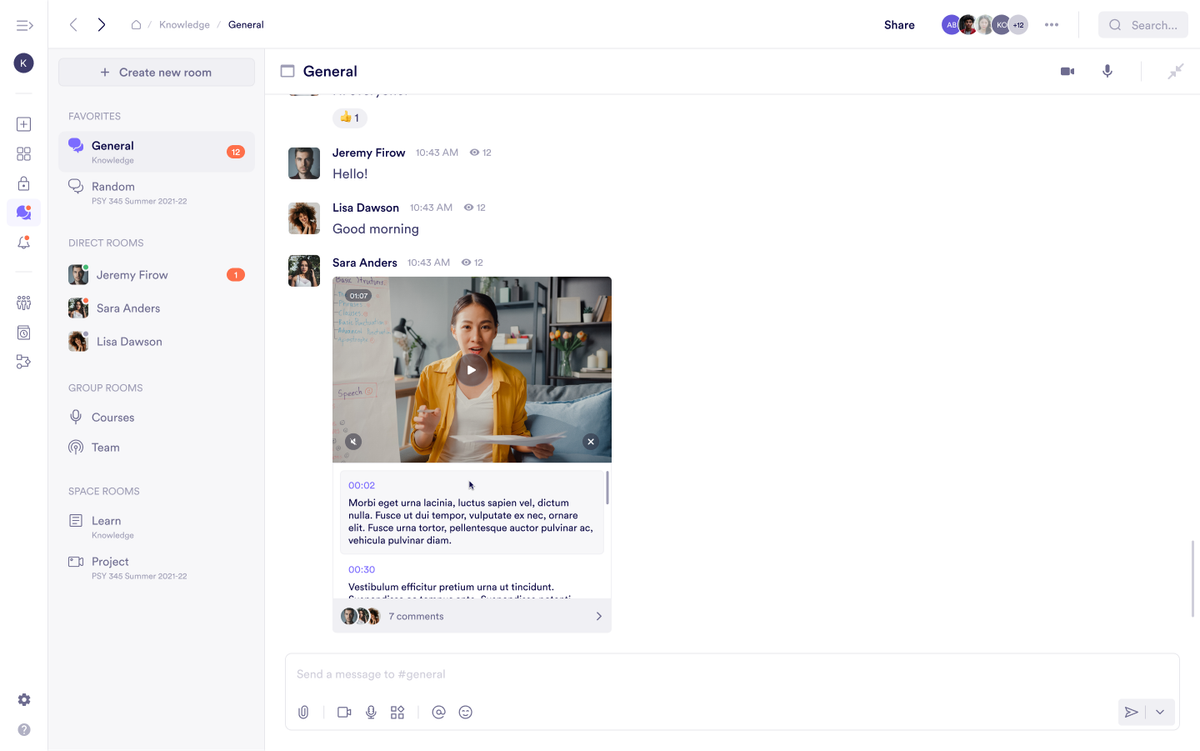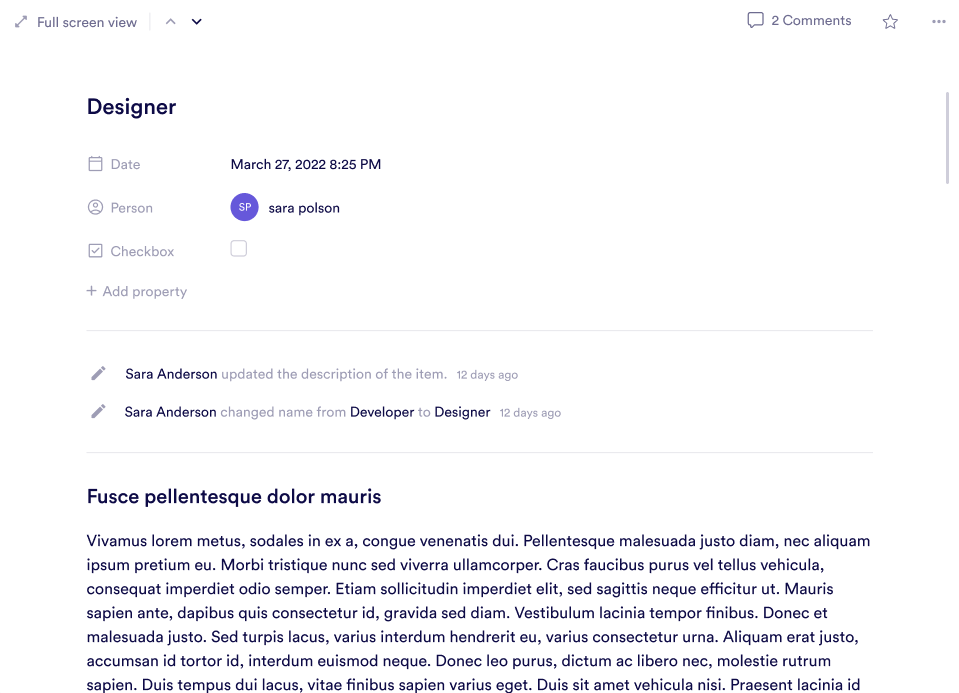Jun 9, 2025
Why Fragmented Workflows Kill Productivity (and the Best Asana Alternative to Fix It)
 Jennifer Simonazzi
Jennifer Simonazzi
The team is sharp. Everyone replies fast, shows up, puts in the hours. Still, the project lags. You asked for a quick asset change last Thursday. Today, someone re-uploads the original.
Files live in one app, tasks in another, chat in a third. Nobody knows which comment changed the plan. The link with the final copy gets buried. The deadline moves but nobody sees it.
This is where teams stall: not for lack of talent, but lack of structure. Without a connected project management tool or centralized collaboration software, teams repeat steps, re-ask questions, and spin in place.
Good async communication doesn’t just ping people. It holds the thread.
Chats, Tasks, Docs: Why Nothing Connects When Everything’s Separate
When project updates land in a chat thread, task statuses hide in a dashboard, and feedback lives in a comment thread nobody sees again, the issue is that no one is working inside the same layer of the process. Every handoff becomes a translation. Every decision demands a recap.
People aren't forgetting things. They're just not standing in the same room.
Most asynchronous collaboration tools claim to reduce noise, but what they often miss is proximity: the ability to place a conversation beside the task it shapes, or to open a page and see not only the brief but also the questions it sparked, the updates it triggered, the progress it enabled.
In Pivot, real-time team communication lives where the work actually happens.

A Slack Alternative Built for Team Content Creation, Not Just Talking
Slack is fast, until you need to remember what someone said three days ago. A project idea takes shape in chat, everyone reacts, and then it’s gone, buried under a lunch photo, a calendar link, and three emojis nobody followed up on. Work moves quickly until it doesn’t, because nobody remembers what they agreed to.
Pivot doesn’t compete with chat; it expands it. Instead of treating conversation as a separate layer, it wraps communication into the architecture of the work. Messages sit inside the task instead of floating beside it.
Teams use pages to talk through drafts, then turn that same thread into an assignment. They set decisions in motion without writing them down twice.
As a strong Slack alternative, Pivot is a place where team content creation tools are tied to actual conversations, so that briefs don’t need to be rewritten and meetings don’t need to repeat what was already said.
The chat still happens. But so does the follow-through.
An Asana Alternative That Connects the Writing, the Planning, and the Doing
Work moves differently when the project plan is the place where everything happens. In Pivot, your brief isn’t disconnected from your meeting notes, your comments aren’t buried in another platform, and your calendar isn’t hanging off the edge of someone’s inbox.
Here, a launch plan begins as a page. As it takes shape, teams build the timeline beside it using databases, add meeting checkpoints with Calendar blocks, and assign tasks without opening another window. With multiplayer document editing, edits happen live, in context, where the original thinking lives—not in a duplicate doc that floats elsewhere.
What makes Pivot more than an Asana alternative and a feature-complete project management app is what happens once everything is already in motion. Updates don’t need repeating. Edits don’t need pasting. Threads don’t need searching. Progress is a direct result of effective organization.

One Place for Your Course, Content, and Grading
Most learning platforms treat courses like spreadsheets: clean in theory, chaotic once you start adding real people, files, due dates, and feedback. A rubric lives on one tab, a video in another, and the actual assignment instructions buried somewhere else entirely. Before the second week of class, everything already feels like a reset.
Pivot does things differently. When you open a space, you see the course. Every assignment lives next to the materials that support it. Rubrics aren’t hidden behind a dropdown. Group work happens inside rooms, with live or async options built in. Students don’t need three logins or a five-minute walkthrough just to turn something in.
For instructors who’ve been switching between a Canvas alternative that’s hard to update, a Blackboard alternative that stalls on upload, or a Brightspace alternative that never quite gets there, Pivot doesn’t ask you to chase your own course down. It gives you a space where the parts show up ready to work.
Don’t Patch Together Notion and Trello; Just Open Pivot
When one task requires four different apps, it goes from behind a workflow to whole maintenance. One tab to check the notes. Another to join the meeting. A third to assign the follow-up. Then someone rewrites it all in Trello anyway. At some point, the project stops moving and just starts circulating.
Pivot doesn't patch around that mess. It pulls structure into a single environment where meetings aren’t floating links and decisions don’t need reformatting just to be recorded. A post room, a canvas, a calendar, they’re not pieces of different products. They’re built to talk to each other without any glue work.
If you’re juggling tasks in Trello, context in Notion, and tracking in ClickUp, Pivot gives you a cleaner place to start. It’s a Notion alternative that’s structured, a Trello alternative with more flexibility, and a ClickUp alternative without a tutorial barrier.

Where the Content Starts and the Work Actually Finishes
When a course, a campaign, or a proposal lives inside Pivot, it anchors itself to the tasks, the team, and the timeline that will actually move it forward. You’re working together right inside the structure that holds every next step. The meetings, the comments, the final versions—they belong in the same environment. And Pivot was built so they don’t fall out of place. Start building your communities, courses, projects, and teams with Pivot HERE.

Jennifer Simonazzi
Content Writer
Share this post
Table of Contents
Subscribe to never miss out on updates and inspiration
Watch new Pivot tutorials, attend live training sessions, and get access to exclusive new features.
